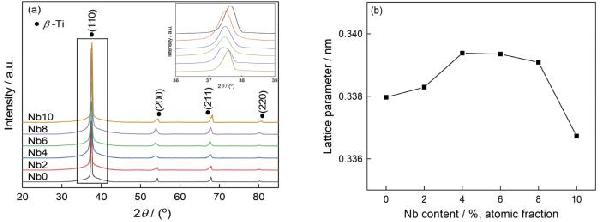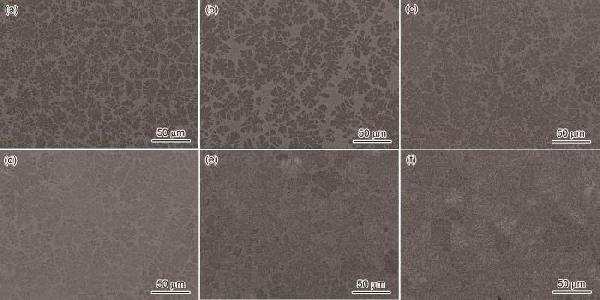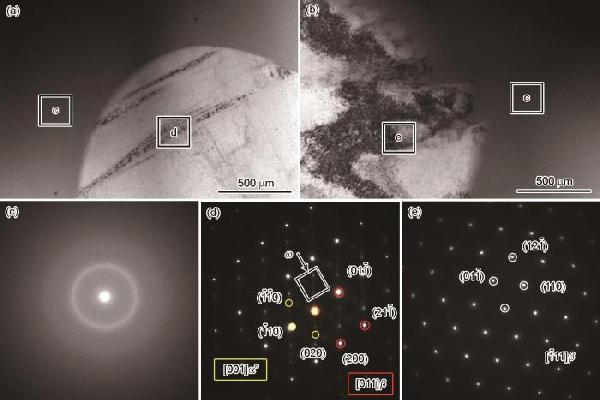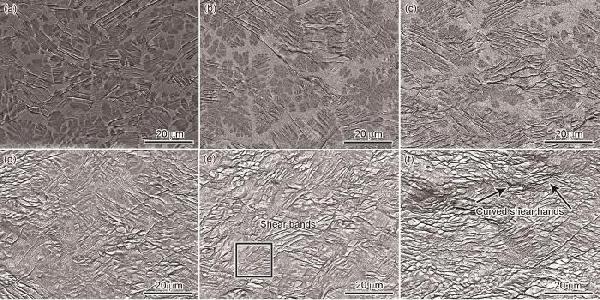
全部
▼
搜索
熱搜:
位置:中冶有色 >
> 添加Nb元素對TiZr基非晶復(fù)合材料性能的影響
 898
編輯:中冶有色技術(shù)網(wǎng)
來源:張益銘,趙子彥,牟娟
898
編輯:中冶有色技術(shù)網(wǎng)
來源:張益銘,趙子彥,牟娟


| Alloys | Nb0 | Nb2 | Nb4 | Nb6 | Nb8 | Nb10 |
|---|---|---|---|---|---|---|
| Volume fraction/% | 49 | 54 | 55 | 62 | 63 | 65 |
| Grain size/μm | 27 | 35 | 36 | 37 | 40 | 41 |


| Alloys | Average | Standard deviation | CV/% | ||||||
|---|---|---|---|---|---|---|---|---|---|
| σ0.2/MPa | σb/MPa | εp/% | σ0.2/MPa | σb/MPa | εp/% | σ0.2 | σb | εp | |
| Nb0 | 1486.66 | 1967.76 | 4.34 | 34.30 | 48.67 | 0.29 | 2.31 | 2.47 | 6.60 |
| Nb2 | 1429.52 | 1864.94 | 7.79 | 17.15 | 29.55 | 0.21 | 1.20 | 1.58 | 2.73 |
| Nb4 | 1347.71 | 1751.56 | 8.86 | 17.82 | 44.12 | 0.96 | 1.32 | 2.52 | 10.87 |
| Nb6 | 1277.94 | 1860.96 | 15.19 | 6.98 | 26.37 | 0.72 | 0.55 | 1.42 | 4.73 |
| Nb8 | 1222.10 | 2153.90 | 26.62 | 11.33 | 20.53 | 0.55 | 0.93 | 0.95 | 2.01 |
| Nb10 | 1266.86 | 2315.36 | 28.80 | 17.17 | 43.03 | 0.59 | 1.36 | 1.86 | 2.04 |



 分享 0
分享 0
 舉報 0
舉報 0
 收藏 0
收藏 0
 反對 0
反對 0
 點(diǎn)贊 0
點(diǎn)贊 0

 中冶有色技術(shù)平臺
中冶有色技術(shù)平臺 2025年03月28日 ~ 30日
2025年03月28日 ~ 30日  2025年03月28日 ~ 30日
2025年03月28日 ~ 30日  2025年04月11日 ~ 13日
2025年04月11日 ~ 13日  2025年04月24日 ~ 27日
2025年04月24日 ~ 27日  2025年04月27日 ~ 29日
2025年04月27日 ~ 29日 
